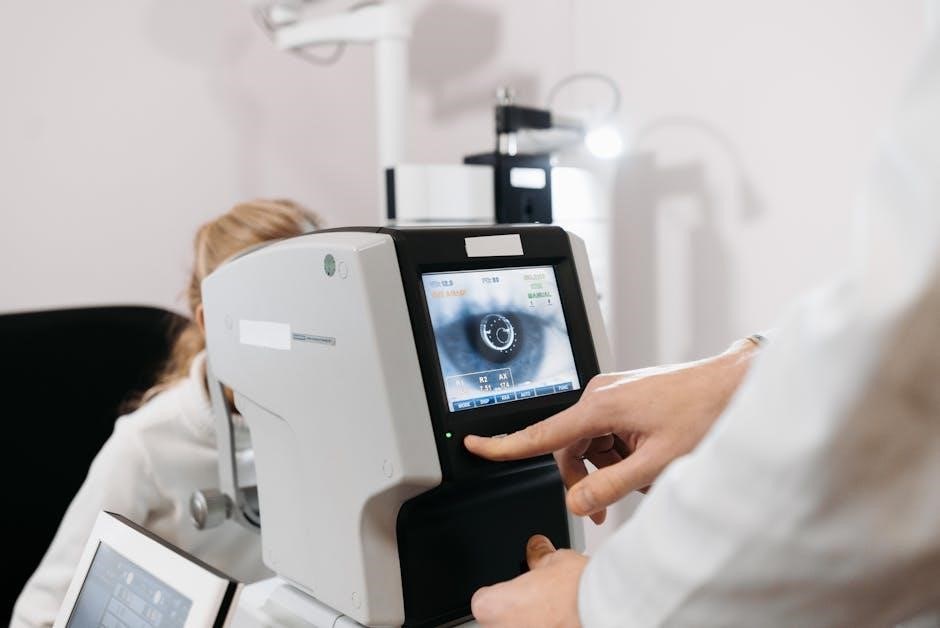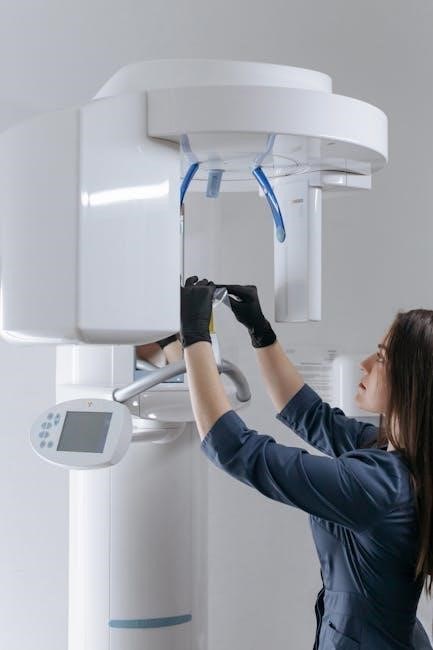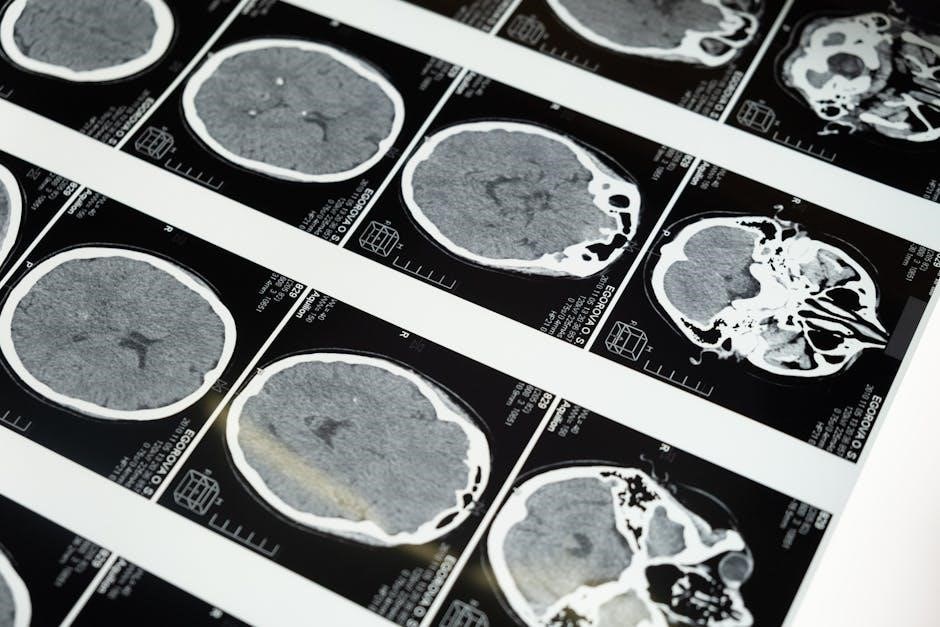Cranial nerve examination is crucial for diagnosing conditions, a comprehensive examination is an indispensable tool in neurological assessment, aiding in accurately diagnosing and managing various conditions effectively always online.
Importance of Cranial Nerve Testing
Cranial nerve testing is a vital component of neurological assessment, enabling healthcare professionals to diagnose and manage various conditions effectively. The examination of cranial nerves provides valuable insights into the functioning of the brain and nervous system. In clinical practice, cranial nerve testing is crucial for diagnosing conditions like stroke, multiple sclerosis, and tumors. A comprehensive examination of the cranial nerves aids in accurately diagnosing and managing these conditions. The importance of cranial nerve testing lies in its ability to detect subtle abnormalities in nerve function, which can be indicative of underlying neurological disorders. By conducting a thorough cranial nerve examination, healthcare professionals can develop effective treatment plans and improve patient outcomes. The examination is an indispensable tool in neurological assessment, and its importance cannot be overstated in the diagnosis and management of neurological conditions. Cranial nerve testing is essential for providing high-quality patient care.

Cranial Nerve Examination Techniques
Examination techniques involve assessing nerve function, including sensory and motor responses, using specialized methods and equipment always online effectively.
Examination of All Cranial Nerves
The examination of all cranial nerves is a comprehensive process that involves assessing the function of each nerve, including the olfactory, optic, oculomotor, trochlear, trigeminal, abducens, facial, vestibulocochlear, glossopharyngeal, vagus, spinal accessory, and hypoglossal nerves. This examination is crucial in diagnosing various neurological conditions, such as stroke, multiple sclerosis, and tumors. The examination techniques involve assessing nerve function, including sensory and motor responses, using specialized methods and equipment. A thorough examination of all cranial nerves provides valuable information about the nervous system and helps in identifying any abnormalities or defects. The examination is typically performed by a healthcare professional, such as a neurologist or a physician, who has the necessary training and expertise to interpret the results accurately. The examination results are then used to develop an effective treatment plan for the patient. Examination of all cranial nerves is an essential part of a complete neurological examination.

Cranial Nerve Assessment Resources
Downloadable cranial nerve examination PDF and online resources are available for healthcare professionals to aid in assessment and diagnosis of cranial nerve disorders effectively always online resources. These are very helpful tools.
Downloadable Cranial Nerve Examination PDF
A downloadable cranial nerve examination PDF is a valuable resource for healthcare professionals, providing a comprehensive guide to assessing and diagnosing cranial nerve disorders. The PDF can be easily accessed and downloaded from various online platforms, allowing professionals to stay up-to-date with the latest examination techniques and protocols. The downloadable PDF typically includes detailed information on the anatomy and function of the cranial nerves, as well as step-by-step instructions for performing a thorough examination. Additionally, the PDF may include illustrations, diagrams, and charts to help illustrate key concepts and facilitate understanding. By utilizing a downloadable cranial nerve examination PDF, healthcare professionals can enhance their knowledge and skills, ultimately improving patient care and outcomes. The PDF can be used in a variety of settings, including clinical practice, education, and research, making it a versatile and essential tool for anyone involved in cranial nerve examination and diagnosis.

Neurological Examination and Cranial Nerves
Neurological examination includes cranial nerve assessment, aiding in diagnosing conditions like stroke and tumors, using online resources and PDF guides effectively always.
Cranial Nerve Testing in Acute Neurology
Cranial nerve testing is essential in acute neurology, where timely and accurate diagnosis is critical. The examination of cranial nerves can help identify life-threatening conditions such as stroke, brain tumors, and meningitis. Online resources, including PDF guides, can provide healthcare professionals with the necessary tools to perform a comprehensive cranial nerve examination. These resources can be easily accessed and downloaded, allowing for quick reference in emergency situations. The cranial nerve examination can be used in conjunction with other diagnostic tests, such as imaging studies, to confirm a diagnosis and guide treatment. Effective cranial nerve testing in acute neurology requires a thorough understanding of the anatomy and function of the cranial nerves, as well as the clinical presentation of various neurological conditions. By combining clinical expertise with online resources, healthcare professionals can provide high-quality care to patients with acute neurological conditions; Cranial nerve testing is a vital component of acute neurology, enabling healthcare professionals to make timely and accurate diagnoses.

and Further Education
Further education on cranial nerve examination is available online, including downloadable PDF resources and interactive checklists for continued learning and professional development always online effectively.
Advancing Innovative Research and Education
To lead in transforming and improving lives, exceptional patient care, innovative research, and outstanding education are crucial, with collegiality and collaboration being essential hallmarks of this endeavor, ultimately enhancing cranial nerve examination techniques and resources.
The development of modern imaging modalities has significant implications for clinical examination techniques, including cranial nerve testing, which remains a vital tool in neurological assessment and diagnosis.
Online resources, such as downloadable PDFs and interactive checklists, play a vital role in advancing education and research in this field, providing accessible and comprehensive information for healthcare professionals and students alike, facilitating continued learning and professional development in cranial nerve examination and related areas.
By leveraging these resources and embracing innovative approaches to research and education, it is possible to drive progress and improvement in the field of cranial nerve examination, ultimately benefiting patients and advancing our understanding of neurological conditions and their diagnosis and treatment.
